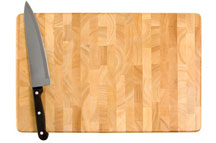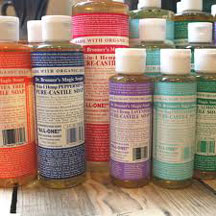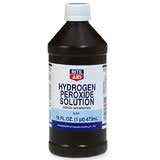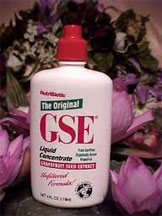Green Cutting Board Disinfecting
By Alice Osborne
Years ago I saved an article I found on a favorite website, Care2. It was all about green cleaning. I've talked about Mr. Clean and 409 and even using ammonia. But there are better approaches for those that are concerned about chemicals and toxins. Here's what Annie Bond, the author of this article, shares:
"People who enter a naturally cleaned home tend to love the way they feel. It's probably because natural cleaning ingredients infuse the space with their subtle scents and natural, non-toxic presence. On some level, our bodies must brace themselves for a chemical onslaught when faced with mainstream cleaners. What better time of year to make your kitchen feel great and welcoming than right now - what with all the opportunity to open the doors and windows to let the fresh air in as a cleaning accompaniment?"
 The best tip is to start with your cutting board, because that's where most food-born illnesses start.
The best tip is to start with your cutting board, because that's where most food-born illnesses start.
"Bacteria grows on cutting boards pretty consistently and keeping them clean using a non-toxic cleaner makes sense for any healthy kitchen. While cleaning a cutting board thoroughly so that it doesn't harbor bacteria is important, in doing so you don't want to add new environmental problems such as the overgrowth of super-bacteria, which disinfectants can cause. Here's what to do instead:
 "First, get in the habit of cutting meat on a glass plate or platter and wash the plates in a dishwasher so that the hot water sterilizes the plate. Next, reduce the concern about deadly bacteria growing in your cutting board by using these simple options:
"First, get in the habit of cutting meat on a glass plate or platter and wash the plates in a dishwasher so that the hot water sterilizes the plate. Next, reduce the concern about deadly bacteria growing in your cutting board by using these simple options:
 "1. The Environmental Protection Agency notes that soap and water kills bacteria. Wash the cutting board with soap and water (use real liquid soap, such as Dr. Bronner's); using a good scrub brush is really effective because it gets into all the nooks and crannies.
"1. The Environmental Protection Agency notes that soap and water kills bacteria. Wash the cutting board with soap and water (use real liquid soap, such as Dr. Bronner's); using a good scrub brush is really effective because it gets into all the nooks and crannies.
 "2. Wash with 3% hydrogen peroxide alternated with straight white distilled vinegar. Let each material rest on the cutting board for 10 minutes or so before rinsing.
"2. Wash with 3% hydrogen peroxide alternated with straight white distilled vinegar. Let each material rest on the cutting board for 10 minutes or so before rinsing.
 "3. If you like the smell of lavender, make an antibacterial spray by mixing about 10 drops of the pure essential oil of lavender to 1 cup of water in a spray bottle. Shake to blend. Spray on the cutting board and don't rinse."
"3. If you like the smell of lavender, make an antibacterial spray by mixing about 10 drops of the pure essential oil of lavender to 1 cup of water in a spray bottle. Shake to blend. Spray on the cutting board and don't rinse."
 And now for tip #4 - my own contribution: I make a green cleaner using peppermint oil, lavender oil, and Grapefruit Seed Extract (GSE). It's thousands and thousands of times more powerful than bleach and it's safe for children and pets. I even put 10 drops of it in my green smoothie every morning. So in a spray bottle, add drops of both oils (to your nose preference), 20 drops of GSE, and fill with water. You can add about 1/4 of white vinegar if you like. You won't smell the vinegar and it creates a bit of a de-greasing factor. This isn't the best degreaser around, but it's a superb general cleaner and disinfectant!
And now for tip #4 - my own contribution: I make a green cleaner using peppermint oil, lavender oil, and Grapefruit Seed Extract (GSE). It's thousands and thousands of times more powerful than bleach and it's safe for children and pets. I even put 10 drops of it in my green smoothie every morning. So in a spray bottle, add drops of both oils (to your nose preference), 20 drops of GSE, and fill with water. You can add about 1/4 of white vinegar if you like. You won't smell the vinegar and it creates a bit of a de-greasing factor. This isn't the best degreaser around, but it's a superb general cleaner and disinfectant!
I use this disinfectant on my cutting boards, the inside of my refrigerator, doorknobs, baby toys, counter-tops (I have granite and it doesn't hurt a thing), and so on.
 Consider replacing your toxic chemical-loaded cleaners - give green cleaning a try and see if like Annie Bond says, folks don't love how they feel in your house.
Consider replacing your toxic chemical-loaded cleaners - give green cleaning a try and see if like Annie Bond says, folks don't love how they feel in your house.

